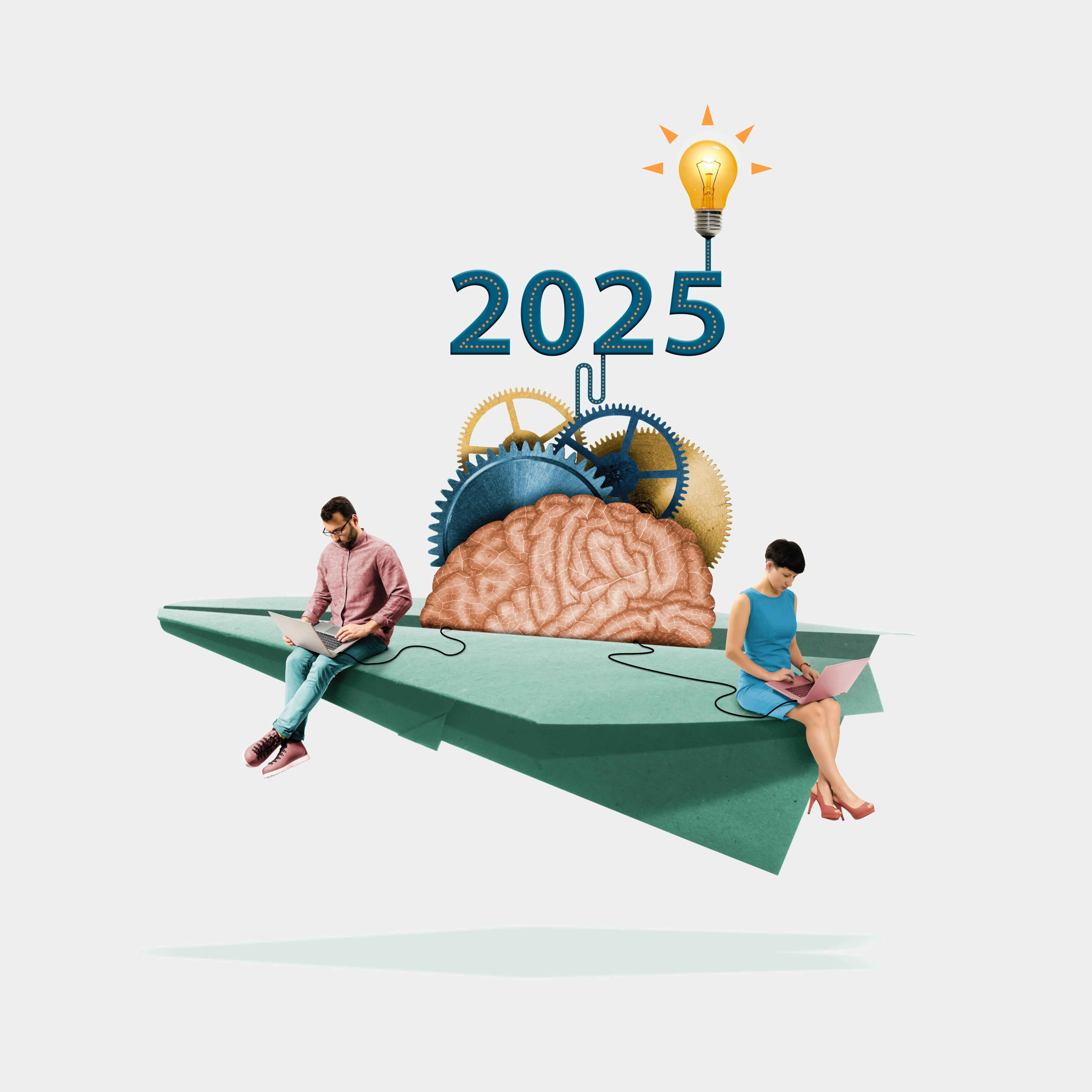Digital transformation is no longer an emerging trend; it has become a strategic imperative. Businesses across industries are embracing new technologies, data-driven models, and customer-centric innovations to suit modern needs. However, while much attention is paid to the tools and platforms involved in digital change, the organisation's structure is often overlooked.
Yet, organisational design can make or break digital transformation efforts. A company's structure must evolve to support the speed and agility that digital transformation demands, including how it arranges teams, decision-making processes, and internal relationships.
In this article, we will explore the key principles that guide effective organisational design in the digital era:
-
Understanding the Strategic Purpose Behind Digital Transformation
-
Moving Beyond Hierarchies Toward Networked Structures
-
Building Digital Capabilities Across the Organisation
-
Facilitating True Cross-Functional Collaboration
-
Redefining Leadership in a Digital Age
-
Embedding Culture into Structure
-
Designing for Continuous Evolution
1. Understanding the Strategic Purpose Behind Digital Transformation
Before rethinking the structure, leaders must be clear about what they want to achieve through digital transformation. Is the goal to improve customer experience, streamline operations, build new digital products, or compete more effectively in a changing market?
Organisational design must reflect these goals. For instance, a business focused on innovation will benefit from small, autonomous teams with the freedom to experiment. On the other hand, if data-driven efficiency is the priority, the structure must support consistent data flow, standardised processes, and robust governance. Without strategic clarity, even the most well-intentioned structural changes can lead to confusion.
2. Moving Beyond Hierarchies Toward Networked Structures
Traditional hierarchies are often too rigid to support digital transformation. Information flow is slow, decisions are delayed, and front-line innovation can be stifled. In contrast, many digitally mature organisations are shifting toward smoother network-based models.
In these structures, authority is distributed, teams are more autonomous, and collaboration happens across functions and levels. Rather than relying solely on formal reporting lines, these organisations operate through agile squads, cross-functional pods, and project-based teams that come together around shared goals.
A well-known example of this approach is Amazon. As part of its commitment to innovation and speed, Amazon has embraced the principle of the "two-pizza team." Introduced by Jeff Bezos, this idea suggests that any team should be small enough to be fed with two pizzas. The goal is to keep teams lean, focused, and nimble to eliminate unnecessary communication layers and enable rapid decision-making.
These small, self-contained teams have their roadmaps and the autonomy to build, test, and launch features without waiting for top-down approval. This structural approach encourages speed, accountability, and innovation. It is one of the reasons Amazon has been able to scale digital products quickly while still operating with startup-like agility.
3. Building Digital Capabilities Across the Organisation
Digital transformation is not the responsibility of a single department; it should be embedded throughout the entire organisation. That means investing in digital skills across all levels and functions. Every part of the business should understand how to leverage digital tools, work with data and support technology-enabled processes, from HR to finance.
Rather than centralising all digital expertise in one team, leading organisations empower employees with the knowledge and resources needed to innovate within their domain. Some establish digital centres of excellence to offer support and share best practices, but they avoid turning these into bottlenecks. The goal is to build an organisation where digital capability is the norm.
4. Facilitating True Cross-Functional Collaboration
One of the hallmarks of digital transformation is the breaking down of silos. Whether you're improving the customer journey or launching a new product, success often depends on collaboration between departments.
This requires structural changes that encourage ongoing interaction across disciplines. Teams should be organised around outcomes rather than functions, and workflows and incentives need to be aligned across departments. In this case, digital tools can support this collaboration, but the underlying design must support openness and integration. Without structural support, collaboration remains a buzzword instead of a reality.
5. Redefining Leadership in a Digital Age
Leadership also needs to evolve alongside structure. In traditional models, leaders often act as gatekeepers and decision-makers. However, in a digital environment, they must become enablers to set direction, clear obstacles, and empower their teams to act quickly and independently.
This shift requires a new mindset. Leaders must be comfortable with ambiguity, willing to experiment, and focused on building a culture of learning and innovation. Governance, too, needs to be adaptive. Instead of rigid control mechanisms, there should be frameworks that support accountability while enabling teams to pivot as needed.
6. Embedding Culture into Structure
Structure and culture are deeply intertwined. Instead of roles and reporting lines, a digital-ready organisation is about how people think, behave and interact. Successful organisational design reinforces the culture needed to support transformation.
That means designing for transparency, psychological safety, and continuous improvement. Employees should feel empowered to challenge assumptions and share ideas. The way teams are formed, meetings are run, and performance is measured—all these design elements should support the culture you're trying to build.
Designing for Continuous Evolution
Organisational design must be agile. Digital transformation isn't a one-off project; it's an ongoing journey. As technologies, markets, and customer expectations change, so must the organisation.
That means adopting a mindset of continuous evolution. Feedback loops should be built into the structure to monitor what's working and what isn't. Small experiments and incremental adjustments are more effective than large, inflexible restructures. The goal is to create a living organisation that adapts — not one that waits for another major overhaul.
Conclusion
Digital transformation is fundamentally about change, not just in technology. To succeed, companies must go beyond software and systems to rethink their structures, roles and ways of working.
Organisational design is a technical exercise and a strategic enabler. When done well, it creates the conditions for agility, innovation, and long-term growth. If your company is embarking on a digital transformation journey, now is the time to ensure your design fits the purpose.
If you are ready to take your understanding of organisational design to the next level, don't miss the Organisational Design Masterclass by London Training for Excellence, taking place in London.
This immersive course is designed for professionals seeking to drive organisational transformation. Through expert-led sessions, practical frameworks and real-world case studies, you will develop the skills to create and lead high-performing organisations in the digital era.
Author: LondonTFE
London Training for Excellence is a distinguished UK-based training company renowned for its global reach and exceptional educational offerings. With a team comprised of passionate and knowledgeable industry experts, we consistently deliver high-quality, award-winning courses and 'real-life’ lessons, guaranteeing that all our clients benefit from the utmost standards of excellence throughout their educational journey.
 All Courses
All Courses
 Accounting and Finance
Accounting and Finance Administration and Office Management
Administration and Office Management Business Administration
Business Administration Chemical Engineering
Chemical Engineering Communications and Public Relations (PR)
Communications and Public Relations (PR) Compliance and Legal
Compliance and Legal Construction Management
Construction Management Contract and Project Management
Contract and Project Management Customer Experience and Relationship Management
Customer Experience and Relationship Management Data Management and Business Intelligent
Data Management and Business Intelligent Digital Transformation
Digital Transformation Energy and Sustainability
Energy and Sustainability Health, Safety and Environment
Health, Safety and Environment Healthcare Management
Healthcare Management Hospitality & Tourism
Hospitality & Tourism Human Resources and Talent Development
Human Resources and Talent Development Industrial Manufacturing and Production
Industrial Manufacturing and Production Innovation and Artificial Intelligence (AI)
Innovation and Artificial Intelligence (AI) Leadership and Management
Leadership and Management Oil and Gas
Oil and Gas Procurement & Supply Chain Management
Procurement & Supply Chain Management Public Sector
Public Sector Quality and Productivity
Quality and Productivity Retail and E- Commerce
Retail and E- Commerce Sales and Marketing
Sales and Marketing Sports Event Management and Operations
Sports Event Management and Operations Strategy and Business Planning
Strategy and Business Planning Sustainability and CSR
Sustainability and CSR Learning Solutions
Learning Solutions
 About Us
About Us
 iLearn Blog
iLearn Blog
 Directory Calendar
Directory Calendar
 Contact Us
Contact Us
 All Courses
All Courses
 Accounting and Finance
Accounting and Finance Administration and Office Management
Administration and Office Management Business Administration
Business Administration Chemical Engineering
Chemical Engineering Communications and Public Relations (PR)
Communications and Public Relations (PR) Compliance and Legal
Compliance and Legal Construction Management
Construction Management Contract and Project Management
Contract and Project Management Customer Experience and Relationship Management
Customer Experience and Relationship Management Data Management and Business Intelligent
Data Management and Business Intelligent Digital Transformation
Digital Transformation Energy and Sustainability
Energy and Sustainability Health, Safety and Environment
Health, Safety and Environment Healthcare Management
Healthcare Management Hospitality & Tourism
Hospitality & Tourism Human Resources and Talent Development
Human Resources and Talent Development Industrial Manufacturing and Production
Industrial Manufacturing and Production Innovation and Artificial Intelligence (AI)
Innovation and Artificial Intelligence (AI) Leadership and Management
Leadership and Management Oil and Gas
Oil and Gas Procurement & Supply Chain Management
Procurement & Supply Chain Management Public Sector
Public Sector Quality and Productivity
Quality and Productivity Retail and E- Commerce
Retail and E- Commerce Sales and Marketing
Sales and Marketing Sports Event Management and Operations
Sports Event Management and Operations Strategy and Business Planning
Strategy and Business Planning Sustainability and CSR
Sustainability and CSR Learning Solutions
Learning Solutions
 About Us
About Us
 iLearn Blog
iLearn Blog Directory Calendar
Directory Calendar
 Contact Us
Contact Us















































 Course category
Course category Course Venue
Course Venue
